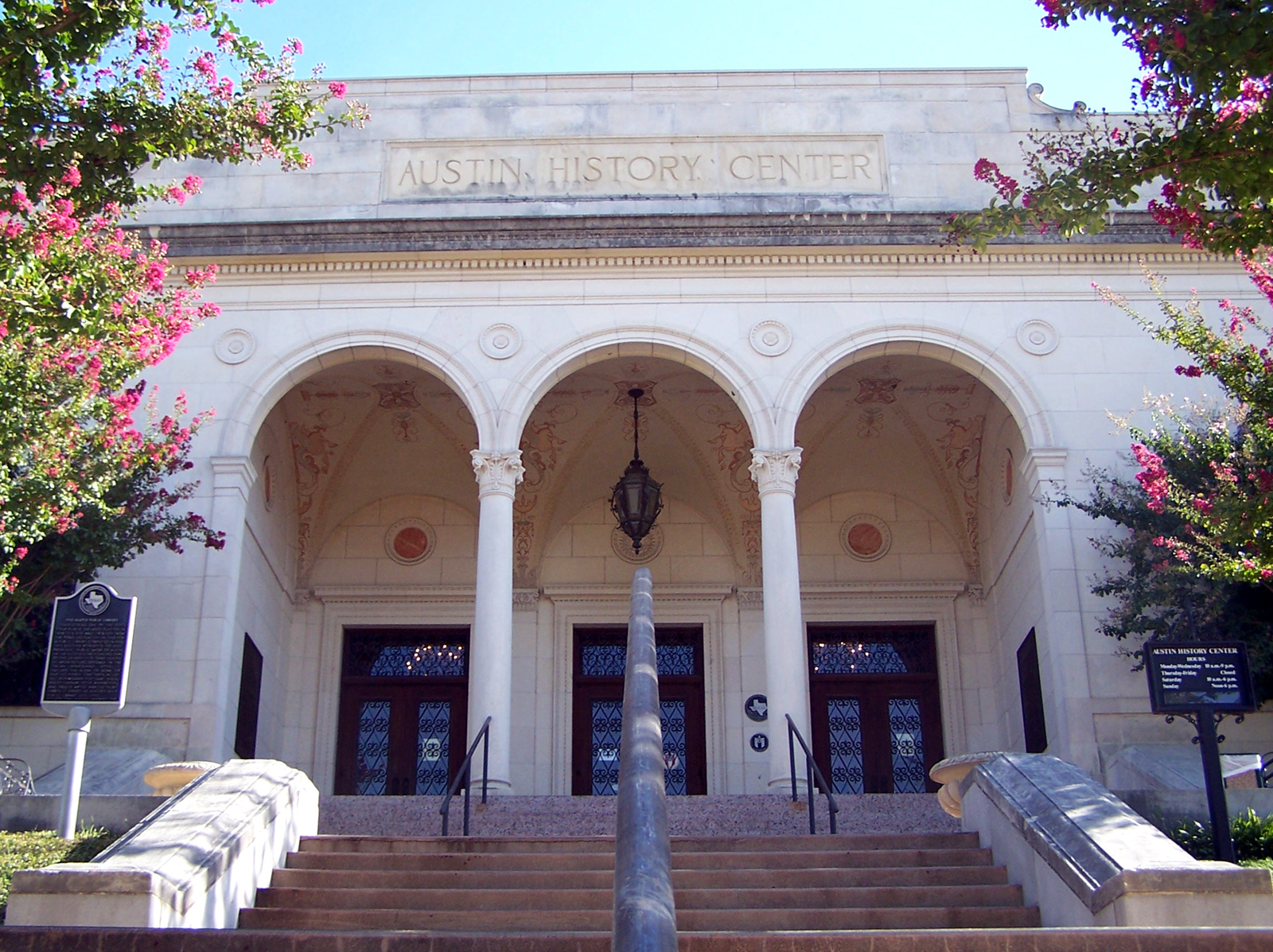- Austin History Center
Infobox_nrhp | name = Austin History Center
(NRHP: Austin Public Library)

caption = The Austin History Center main entrance
locator_x =
locator_y =
location = 810 Guadalupe StAustin, Texas , USA
nearest_city =
lat_degrees = 30
lat_minutes = 16
lat_seconds = 17
lat_direction = N
long_degrees = 97
long_minutes = 44
long_seconds = 44
long_direction = W
built = 1933
architect=Hugo Franz Kuehne
added =May 6 ,1993
refnum=93000389
governing_body = Austin Public LibraryThe Austin History Center is the city historical archive forAustin, Texas and is regarded as one of the best such facilities in the United States. The building opened as the official Austin Public Library in 1933 and was renovated more than once before moving to a newer facility next door in the 1970s.The Austin History Center celebrated its 50th anniversary in 2005. Today it houses thousands of documents, photographs, maps, artifacts, and personal histories. It features special exhibits and speakers on a regular basis.
The historic library building was added to the
National Register of Historic Places in 1993. It is located at 810 Guadalupe Street.Texas Historical Commission Marker TextOverlooking one of the city's four public squares platted in 1839, this site was obtained from the
Texas Legislature in 1913 for a public library. Completed in 1933, this building represents the most prominent public work of Austin native Hugo Kuehne, founding dean of theUniversity of Texas School of Architecture. Designed in theItalian renaissance style, it features the work of some of Austin's finest craftsmen, including ironworker Fortunat Wiegl, wood-carver Peter Mansbendel, and fresco artist Harold "Bubi" Jessen. It served as Austin's main public library until 1979. Recorded Texas Historic Landmark- 1993 [ [http://www.thc.state.tx.us/ Texas Historical Commission] ]References
External links
* [http://www.ci.austin.tx.us/library/ahc/ Austin History Center]
* [http://atlas.thc.state.tx.us/common/viewform.asp?atlas_num=2093000389&site_name=Austin+Public+Library&class=2001 Texas Historical Commission]
Wikimedia Foundation. 2010.
